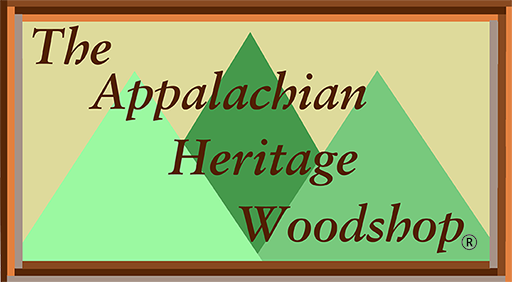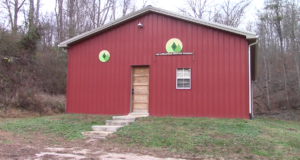

This unique console table measures 37 3/4″ H x 22 5/8″ W x 59 5/8″ L. It features a mineral stained maple top with a walnut base. The base is trimmed with a cherry strip. There are some worm holes and trails in the top.
Mineral stains occur when minerals from ground water is absorbed by the tree.
All of the lumber came from Cabell County, WV with the maple coming from a gentleman’s lawn in Culloden and the walnut from the Marshall University campus.


This 59 3/8″ L x 22 1/2″ W x 16 1/2″ H coffee table has a cherry top on a walnut base with cherry accent trim.
All of the lumber came from Cabell and Kanawha Counties, West Virginia.

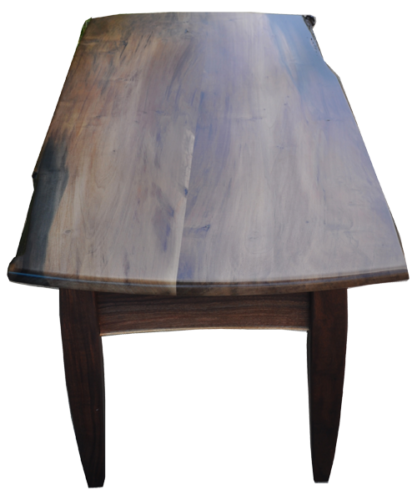
This 22 1/4″ W x 16 7/8″ H x 51 1/8″ L coffee table is has a mineral stained spalted maple top and a walnut base with quarter sawn ash trim. Spalting is a result of fungal decay. There is a fine timeline between beautiful usable lumber and rotten wood. Mineral stains occur when minerals from ground water is absorbed by the tree.
All of the lumber came from Cabell County, WV with the maple coming from a gentleman’s lawn in Culloden and the walnut and ash came from the Marshall University campus.
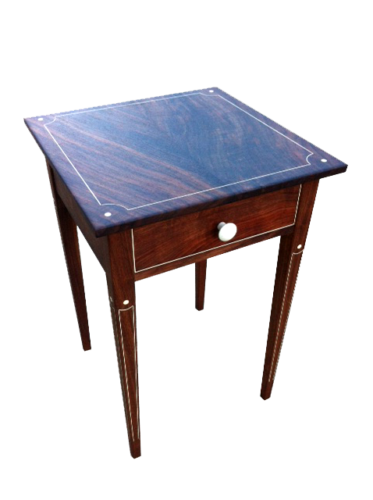

The federal style furniture was prominent from 1780 – 1820. This Federal table has a book matched walnut top with holly inlay. The legs are tapered walnut with holly inlay. A small bead of holly wraps the drawer which is hand cut half-blind dovetails.
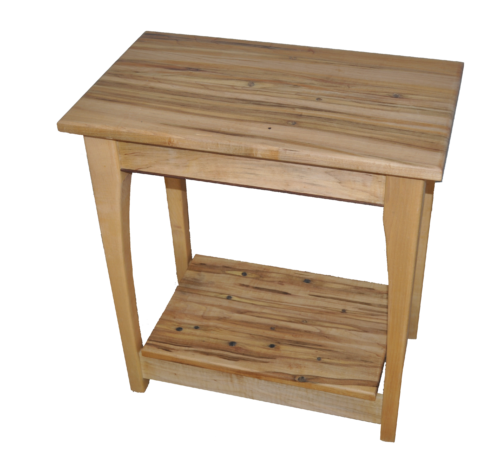
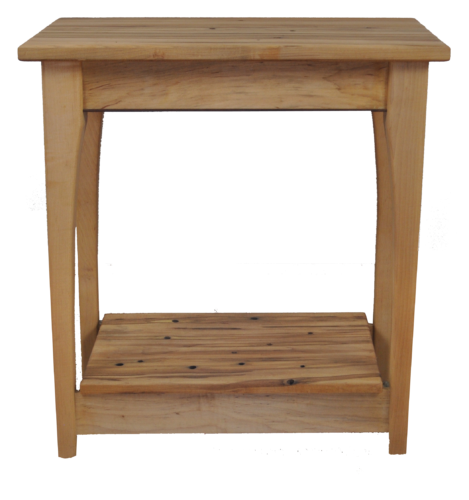
This table features tap hole maple for the top and bottom shelf. Tap hole maple is the lower section of a maple tree that has been tapped multiple times for maple syrup. The holes allow fungus to grow in the grain of the wood and it resembles ambrosia maple except the holes or bigger than those created by the ambrosia beetle. The unique shaped maple legs draws the eye to the table. Maple aprons are accented with small walnut beading.
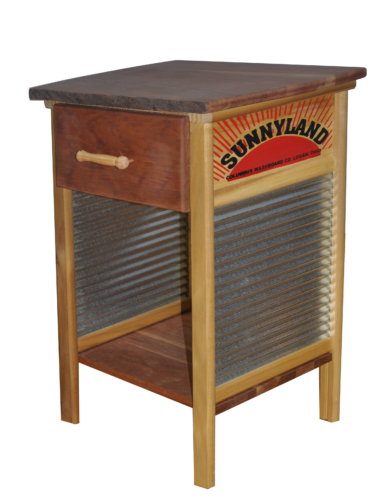
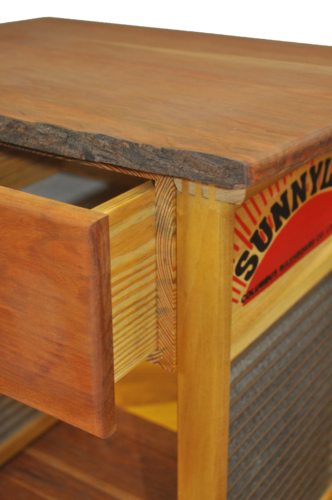
This table was built to highlight the old wash boards used to wash clothes. The table contains wash boards for the sides and live edge cherry for the top. The cherry drawer front has a custom turned clothes pin as a handle. The open front and bottom shelf allows for storage.
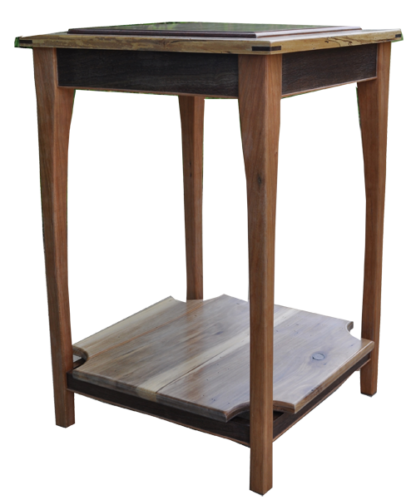
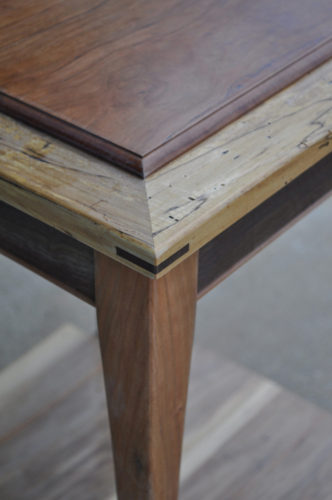
This 17″ square x 25 1/2″ H end table is constructed of spalted maple, cherry and walnut. The modified raised top is a cherry panel. The base is walnut and the shelf is mineral stained maple.
Spalting is a result of fungal decay. There is a fine timeline between beautiful usable lumber and rotten wood. Mineral stains occur when minerals from ground water is absorbed by the tree.
All of the lumber came from Cabell and Kanawha Counties, West Virginia.

Singer Featherweight sewing machines are very popular with quilters. This cherry table was commissioned by an owner of a Featherweight machine.
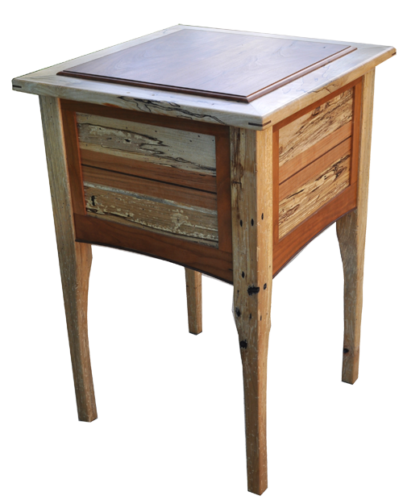

This 18 1/2″ square x 27″ H occasional table is constructed of spalted maple, cherry and walnut. The modified raised top is a cherry panel. Inserted side panels are laminated spalted maple, cherry and walnut. Spalting is a result of fungal decay. There is a fine timeline between beautiful usable lumber and rotten wood.


A cigar rolling table is designed as a work surface where cigars are hand rolled and then placed on the top shelf for the supervisor to inspect. My cigar rolling table is made with oak and the top shelf is secured with hand cut dovetails. The legs are large white oak with a hand carved lamb’s tongue detail. The bottom stretchers ensure the table withstands the abuse of daily production activity. The top stretchers are arched and highlighted with a thin walnut accent.
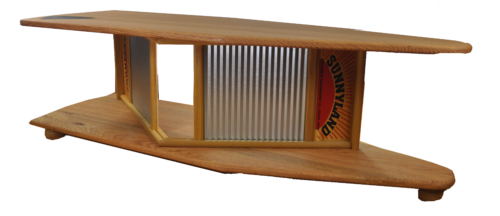

The tabletop resembles an old ironing board and I even simulated a scorched top in the shape of an old iron. Three bunn feet are turned and installed to elevate the whole table to the standard height. This table was featured in Season 1.
